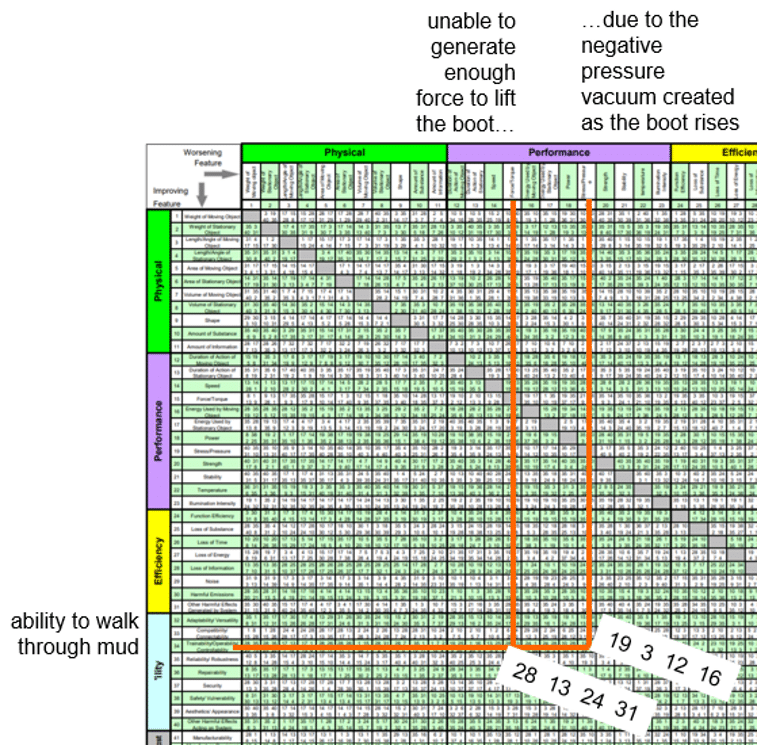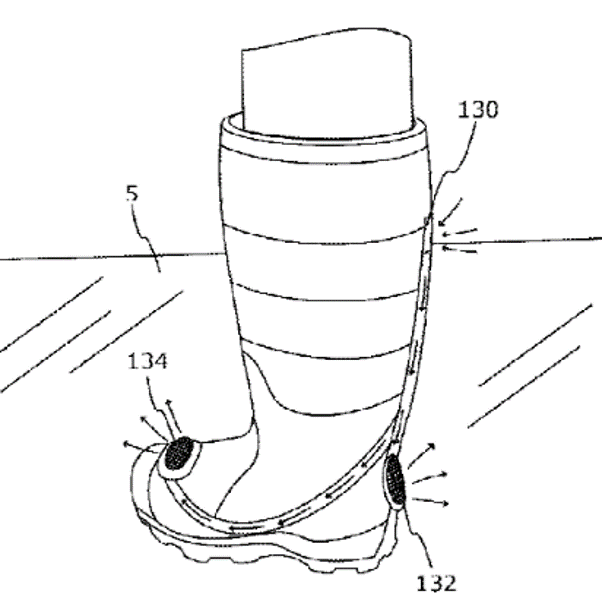Schadenfreude is the second cousin of innovation. One of my favourite January sights was a video of German security forces getting stuck in mud during an attempt to disperse a group of protesting wizards. You can find a copy of the video here: https://www.youtube.com/watch?v=muNtOwLqoO8. In fairness to the victims, by the end of the incident, I think they were also struggling to avoid laughing at one another. Pure slapstick. And yet, such a simple problem. But here we are, ten thousand years since humans first invented footwear, and still we can’t reliably find our way across a muddy field.
Or maybe, strictly speaking, the problem is complicated rather than simple. Complicated because it involves a contradiction: we want to be able to walk across the muddy field, but when we sink into the mud, it forms a pretty good seal, so that when we try and lift our feet, a negative pressure vacuum is formed under the sole of the boot. The more force we try and apply to lift the boot, the bigger the vacuum. Net result: mocking wizards.
Here’s what the Contradiction Matrix has to say about the problem:

Over the years, in fairness to the Schadenfreude-inspired inventors of the world, there have been numerous solutions attempts. All of them, as far as I can see, making elegant use of Inventive Principles 12, Equipotentiality, and 31, Porous Materials (or ‘Holes’). The former sounds fairly obvious as a direction – if a vacuum is being formed, reduce it. Probably a little too obtuse for most tastes. Rather more explicit in terms of working out how to reduce the pressure difference is the second Principle: add holes. One of those often counter-intuitive solutions that requires us to overcome an initial piece of psychological inertia. And that, in this case, is probably something like, ‘if there are holes in the boot, doesn’t that mean my feet will get wet?’ Well, of course, not if we think carefully about where to put the holes. The first hole-based solution I saw came in the form of an interview on a local TV news channel, probably twenty years ago. The inventor in the article, had solved the problem by introducing a hollow tube extending from the heel of the boot up to the rim at the top. I don’t know what happened to it. The TV demonstration looked pretty convincing at the time. Convincing enough that, if I’d been in charge of procurement for the German security forces, I would probably have gone out and order a couple of dozen pairs. As far as I can see, no-one submitted a patent application. Which is a shame because, 2018 saw the submission of another bottom-to-top pressure-relieving tube solution. It’s slightly more complicated than the one I saw twenty years ago, but it uses essentially the same principle. And that is allowing air to be drawn down the tube to relieve the vacuum that would otherwise have formed when the wearer tried to lift their feet. Here’s what the 2018 solution (US20180199662 if you’re interested in reading more) looks like:

In the end, this might just be another case of solving one contradiction creating a good solution, and only when we solve the next contradiction do we turn it into a ‘wow’ solution. All well and good to introduce a pressure-relieving tube, but the combination of ‘tubes’ and ‘mud’ doesn’t sound like a particularly synergistic one. I don’t doubt the negative pressure aspect of the design will be good at ensuring the tube doesn’t block up with mud. But I’m also pretty certain that when I’ve safely round up the annoying wizards and gone back to base, there will be some level of residual mud on the boot and in the tube. If I then allow that mud to dry in readiness for the next wizard protest, the combination of tube and dried mud sounds like a problem I don’t want to have to deal with. But then again, its merely the next contradiction, right? Time to get the patent generation boots on…
